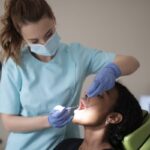When you hear “sunset radiology,” what comes to mind? Perhaps, it conjures images of the golden hour, when the day’s last light paints the world in amber hues. But in the medical world, it’s not just about picturesque moments. Sunset radiology, a term I’ve coined to describe the unique practice of conducting radiological exams during the late afternoon and evening, offers distinct advantages and challenges. This article dives deep into this fascinating scheduling approach, exploring how it impacts patient care, staff productivity, and overall healthcare outcomes.
Why Sunset Radiology?
Transitioning smoothly into the core of our topic, let’s explore why some facilities adopt this unconventional timing:
- Patient Convenience: Many patients juggle daytime commitments like work or school, making evening appointments a boon.
- Operational Efficiency: Utilizing evening hours can lead to better use of radiology departments, often quieter during these times.
- Staff Flexibility: For radiologists and technicians who prefer or require different schedules, sunset radiology can be a perfect fit.
These factors make sunset radiology a significant yet under-discussed aspect of modern healthcare.
Advantages of Sunset Radiology
Delving deeper, sunset radiology isn’t just about scheduling—it’s about enhancing the radiology experience:
Better Use of Resources
- Equipment Utilization: Radiological equipment, which represents a substantial investment, sees increased use.
- Human Resources: Evening shifts can help distribute workloads more evenly among staff.
Enhanced Patient Satisfaction
- Reduced Wait Times: Evening slots can reduce backlog and waiting periods.
- Privacy and Comfort: Patients benefit from a quieter, less crowded environment.
Improved Work-Life Balance for Staff
- Flexible Schedules: Allows staff to manage personal commitments alongside professional responsibilities.
- Reduced Burnout: Spreading hours can mitigate the intense pressure often seen in healthcare settings.
Challenges and Solutions
However, the practice isn’t without its hurdles. Here’s how some facilities overcome these challenges:
Staffing Issues
Solution: Implement rotating shifts and provide incentives for evening hours to attract and retain staff.
Lighting and Environmental Factors
Solution: Use enhanced indoor lighting to ensure clear and accurate imaging results.
Patient Outreach and Communication
Solution: Employ targeted communication strategies to inform patients about the availability of evening services.
Case Studies: Success Stories of Sunset Radiology
Illustrating the success, several healthcare facilities across the globe have adopted sunset radiology with remarkable outcomes. These case studies highlight the improved operational efficiency and patient-centric benefits achieved.
FAQs on Sunset Radiology
- What types of radiological procedures can be performed during sunset hours?
- Most non-emergency procedures like MRI, CT scans, and X-rays are ideal for evening schedules.
- Are there any additional costs associated with radiological services in the evening?
- Typically, costs remain consistent across hours, though some facilities might charge a premium for after-hours services.
- How do sunset radiology hours impact emergency radiology services?
- Evening hours can free up daytime resources for more urgent cases, thus enhancing response times for emergencies.
Transitioning Toward a Twilight Model in Healthcare
Implementing sunset radiology requires careful planning and consideration. It involves adjusting staffing models, patient communication strategies, and even the physical layout of radiology departments. However, the potential benefits for patient satisfaction and operational efficiency make it an appealing model for the future of healthcare.
Conclusion
As we’ve explored, sunset radiology presents a unique blend of challenges and opportunities. It emphasizes the importance of adaptability in healthcare settings, catering to the evolving needs of patients and staff alike. By embracing innovative approaches like evening radiology sessions, medical facilities can significantly enhance the quality of care and service delivery, proving that sometimes, the best operations are not conducted at the break of dawn, but rather at the close of day. Embracing this twilight model might just be the next frontier in optimizing healthcare delivery.
In the world of healthcare, sunset radiology shines bright, promising a future where both patients and medical professionals have more to gain.





